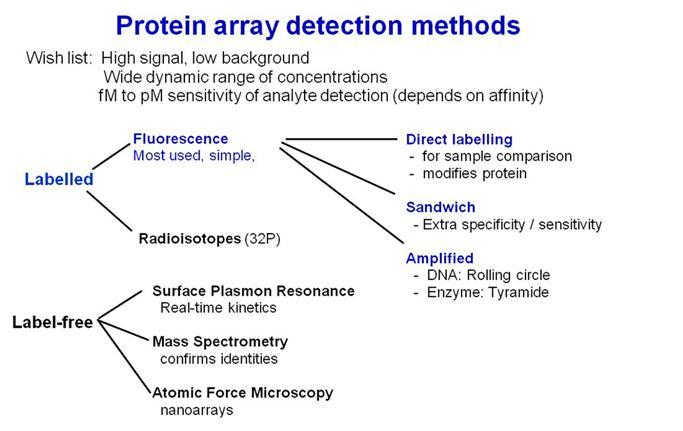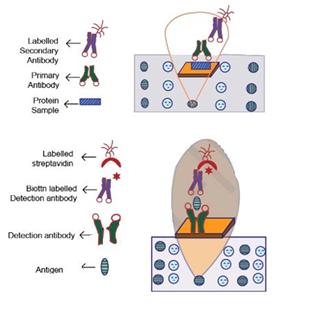Detection system
Fluorescence labelling and detection methods are widely used and are highly sensitive. The same instrumentation as used for scanning DNA microarrays is applicable to protein arrays. For differential display, capture (e.g. antibody) arrays can be probed with fluorescently labelled proteins from two different cell states, in which cell lysates are directly conjugated with different fluorophores (e.g. Cy-3, Cy-5) and mixed, such that the colour acts as a readout for changes in target abundance. Use of 2-colour assays with direct labelling allows control for spot variability as well as comparison between two different samples. Fluorescent readout sensitivity can be amplified 10-100 fold by tyramide signal amplification (TSA). Planar waveguide technology enables ultrasensitive fluorescence detection, with the additional advantage of no intervening washing procedures. High sensitivity can also be achieved with suspension beads and particles, using phycoerythrin as label or the properties of semiconductor nanocrystals (Quantum dots).
A number of novel alternative readouts have been developed, including adaptations of surface plasmon resonance (for real time kinetic measurements), rolling circle DNA amplification (for sensitivity down to near the single molecule level), mass spectrometry (for definitive protein identification), resonance light scattering and atomic force microscopy (for nanoarrays).

